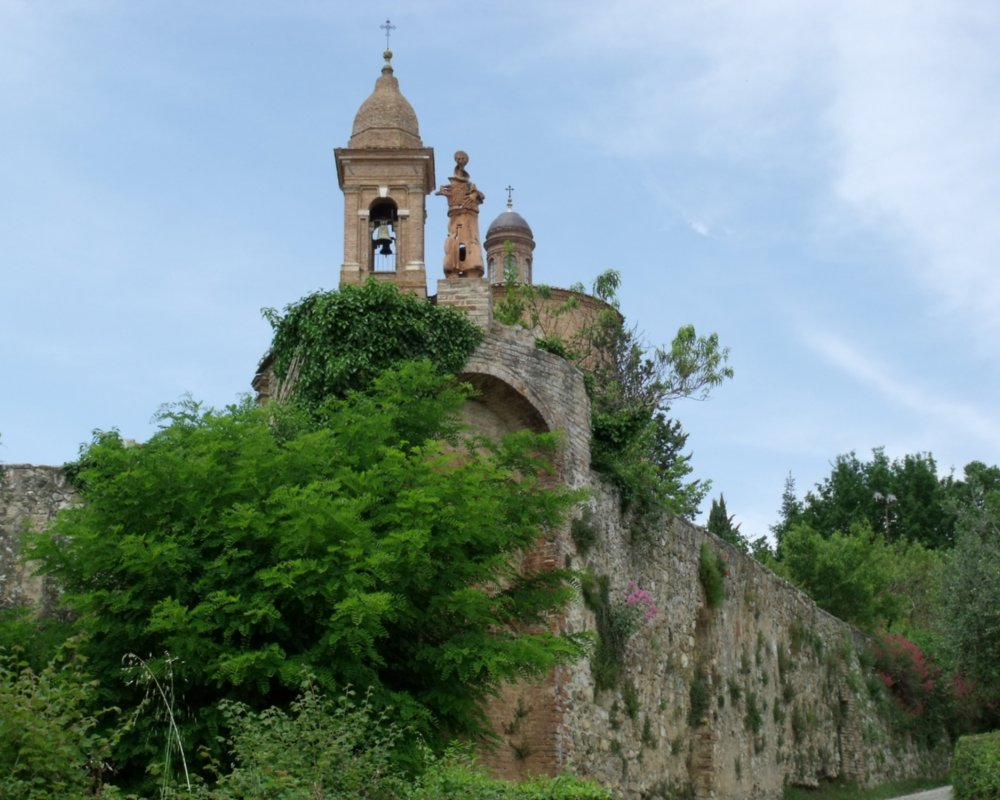By bike on the ridge between Chianti and the Crete Senesi
The itinerary begins at the Barriera di San Lorenzo, called "le Lupe" by the inhabitants of Siena. This was the place where duty was paid to enter the city, scrutinized by the two she-wolves of Siena that can still be seen on the remains of the curtain wall.
The road goes down and then up the Capriola hill, where we make a very short detour to arrive at the Basilica dell'Osservanza and enjoy one of the most beautiful views of the city of the Palio. It was St. Bernardino of Siena, Franciscan friar minor and great preacher, who wanted this convent built on a hill where peace and silence reign. The church, bombed in 1944 and rebuilt immediately after the war, is bare and simple on the outside while the interior, with its Renaissance layout, is a veritable treasure trove of art.
Shortly afterwards, once we arrive at the Provincial Road of Montevarchi, we turn left, always riding our bikes up and down, passing by the towns of Ponte a Bozzone and San Giovanni, until we reach Pianella. We cross the bridge over the Arbia river and follow the directions for Monteaperti, riding uphill until shortly before the locality of San Piero in Barca where we reach the ridge road that we will follow as far as Monteaperti, site of the famous battle between the Ghibellines from Siena and the Guelphs from Florence. On a knoll, a pyramid-shaped memorial stone, framed by cypress trees, commemorates the bloody event.
The ridge on which we are riding somewhat marks the border between Chianti and the Crete Senesi area, amid a territory of villages, castles, vineyards and woods on one side, and endless spaces dotted with isolated farmhouses on the other side.
After Montaperti it is worth stopping at the Romanesque church of Saint Ansanus, whose presence seems to have been attested as early as the 7th century and which since 1107 has held the precious relic of the arm of St. Ansanus, the patron saint of Siena who was supposedly martyred in these territories.
Soon after we find the thermal spring of Acqua Borra, already known in Etruscan and Roman times and mentioned in various treatises by doctors and philosophers as water with prodigious effects. This place of undoubted charm is located near an isolated farmhouse, close to the course of the Malena stream and leaning against a travertine wall; next to it the thermal waters gush out, piped into a square basin.
The last stretch of the route touches in quick succession the towns of Casetta, Arbia (where we can admire a signpost column dating back to 1840, the times of Grand Duke Leopold II), Taverne d'Arbia and Ruffolo. Finally, we are back in Siena.
Itinerary curated by stradedisiena.it


